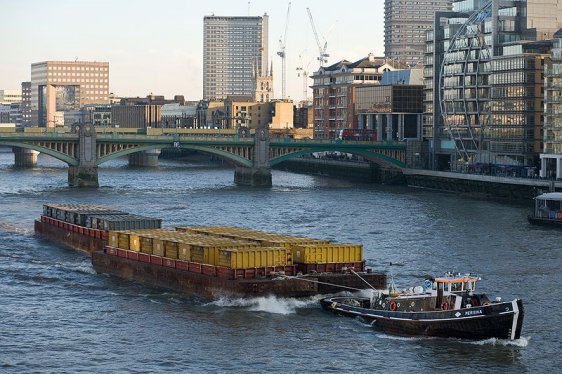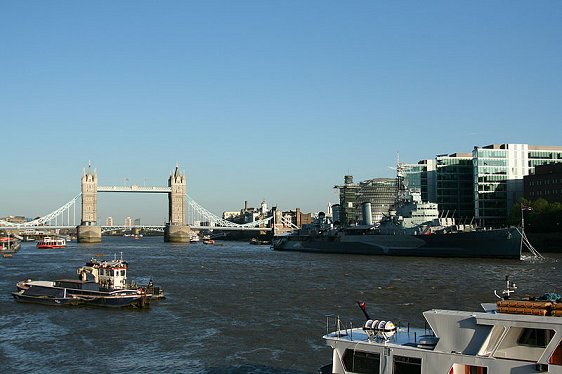The River Thames is the primary river that flows through central London. At 346 km (215 mi) in length, it is also the second longest river in the United Kingdom, and the longest to be entirely in England. Apart from London, it also passes through other major cities including Oxford, Reading, Kingston upon Thames, Windsor, Henley-on-Thames and Richmond.
The generally accepted source of the River Thames is at Thames Head, a site about one mile to the north of the village of Kemble in Gloucestershire.
 Barge on the River Thames
Barge on the River ThamesSource: https://commons.wikimedia.org/wiki/File:Barge_on_River_Thames,_London_-_Dec_2009.jpg
Author: David Iliff

 View of River Thames near the Tower Bridge in London
View of River Thames near the Tower Bridge in LondonSource: https://commons.wikimedia.org/wiki/File:002SFEC_HMS_BELFAST-200705.JPG
Author: Steve F-E-Cameron

List of Places in London

Copyright © 2003-2025 Timothy Tye. All Rights Reserved.

 Go Back
Go Back